(NLDO) - Astronomers have continuously found strange things in the constellation Ophiuchus, from promised lands of life to terrifying worlds .
The constellation Ophiuchus (Snake-herder - Ophiuchus) is one of the 48 constellations named by the ancient Greek scholar Claudius Ptolemaeus in the 2nd century. With modern science , we can see more and more clearly the world inside this constellation.
But sometimes, that just makes it all the more mysterious.
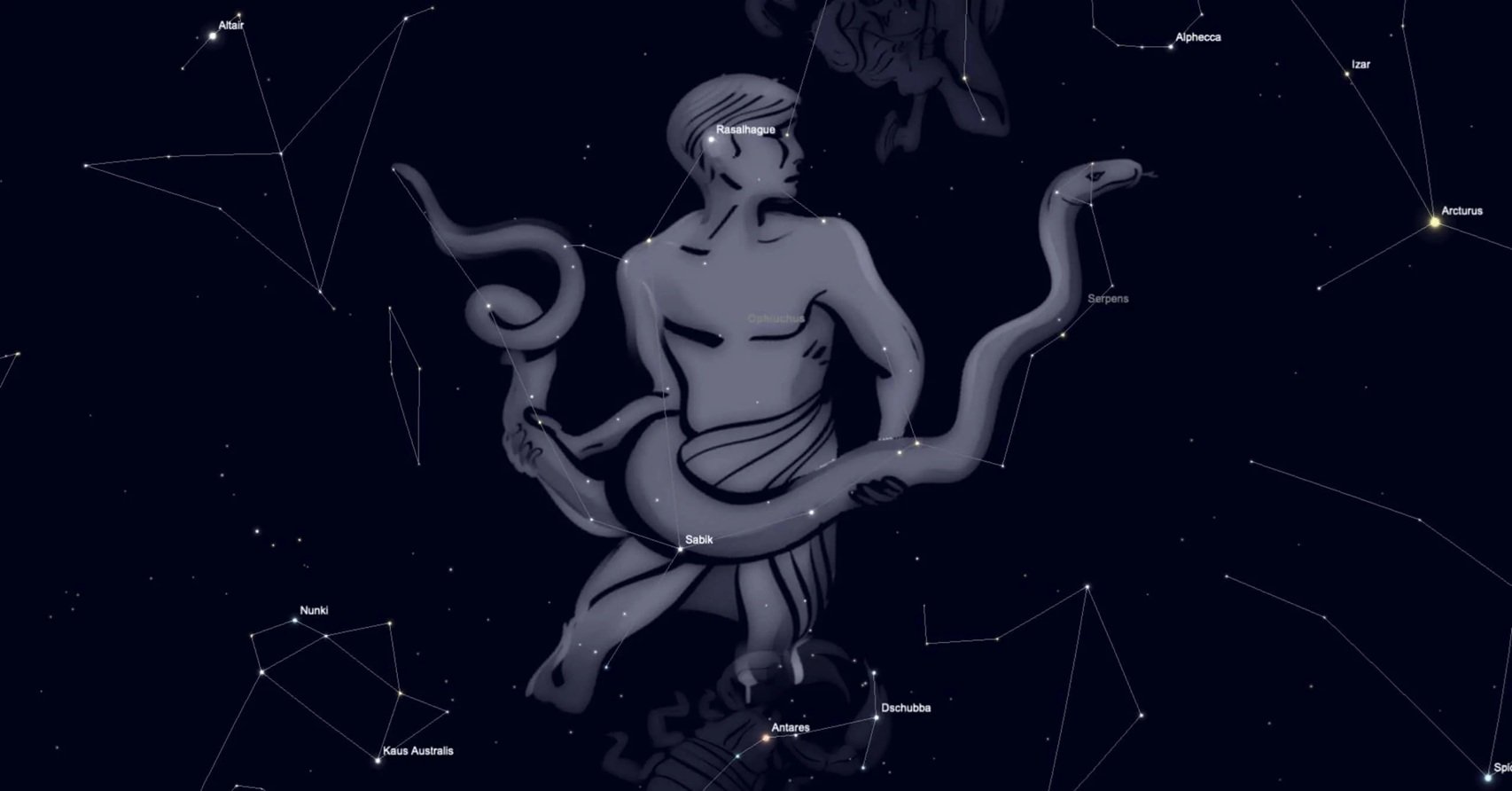
The constellation Ophiuchus with the main stars forming the image of a man carrying a large snake - Photo: LOVE THE NIGHT SKY
1. "Parallel world"?
A star-forming region called the "Ophiuchus Cloud Complex" in the constellation Ophiuchus is expected by scientists from the Flatiron Institute (USA) to contain a "parallel world" of the Solar System, which is still in its infancy.
This region contains numerous dense protostar cores at various stages of star formation and protoplanetary disk evolution, representing the earliest stages in planetary system formation.
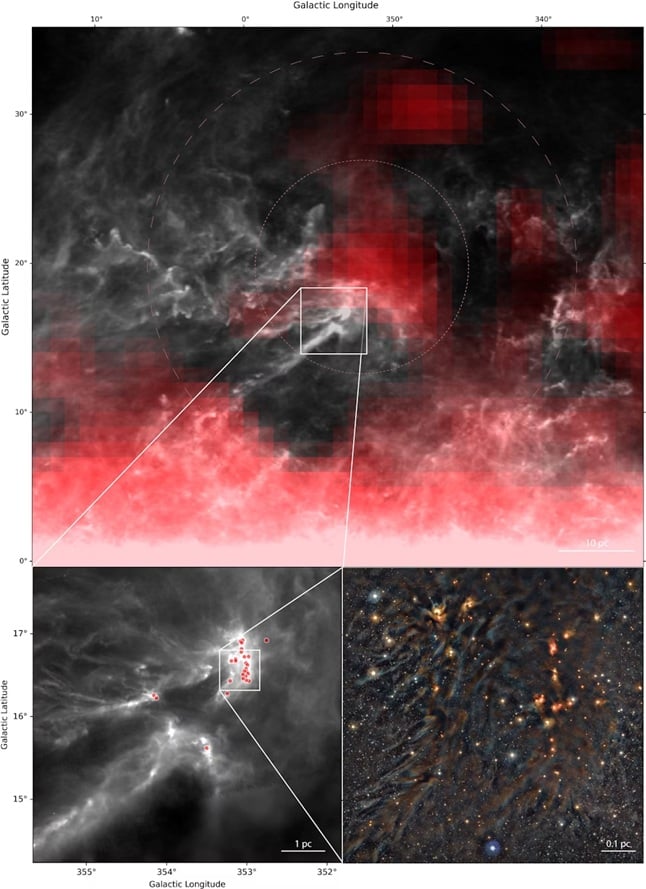
A special star-forming region in the constellation Ophiuchus - Photo: FLATIRON INSTITUTE
There, the team identified the isotope aluminum-26, which is built inside stars and has a relatively short lifespan of just 100,000 years.
Aluminum-26 in calcium-aluminum-rich structures known as CAIs, which are submillimeter in size, provided a significant source of heat during planet formation.
CAI is released when stars die and explode as supernovae. And that may also be how Earth was "seeded" in the solar system billions of years ago.
2. Where life was born or is forming
Planet Gliese 1214b orbits a red dwarf star in the constellation Ophiuchus, has a diameter 2.9 times that of Earth and is 8 times heavier, and has been identified by scientists from the University of Maryland (USA) as having a water-rich atmosphere.
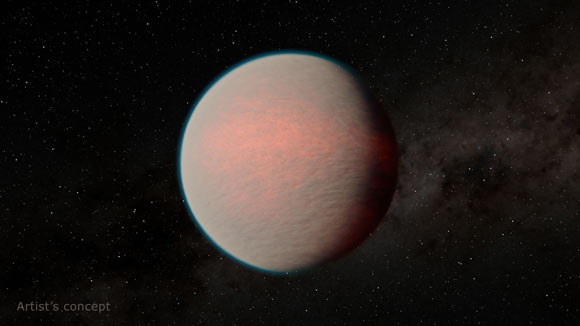
Planet Gliese 1214b - Photo: ESO
Currently, it has a daytime temperature of 279 degrees Celsius and a nighttime temperature of 165 degrees Celsius, which is too hot for us, but still much cooler than Venus - where it is thought that life may still exist.
In addition, the authors also suggest that this planet may have been a former "water world", where the oceans contained more water than Earth, with the possibility of ancient life, albeit extinct.
Meanwhile, another team from Queen Mary University (UK) identified a protostar named IRAS16293-2422 B, 450 light-years away in the constellation Ophiuchus.
Most importantly, it was born in a star-forming region containing the molecule glycolonitrile, the same primitive “building block of life” that gave rise to life on our planet.
This molecule has the chemical formula HOCH2CN, meaning it contains carbon, oxygen, hydrogen, and nitrogen atoms. It is thought to be a precursor to the formation of adenine, a basic component in both DNA and RNA.
So maybe there's a "parallel Earth" being born out there.
3. Brown dwarf treasure trove
Brown dwarfs are mysterious objects that lie between the states of stars and planets.
They are too large to be planets but too small to be stars, and cannot sustain the fusion reactions needed to be considered stars.
They appear to be "born out of nothing," forming directly from the molecular clouds that host them as stars, rather than from the protoplanetary disk of a star.
Because of this, they are sometimes called "failed stars" or "planets from nowhere".
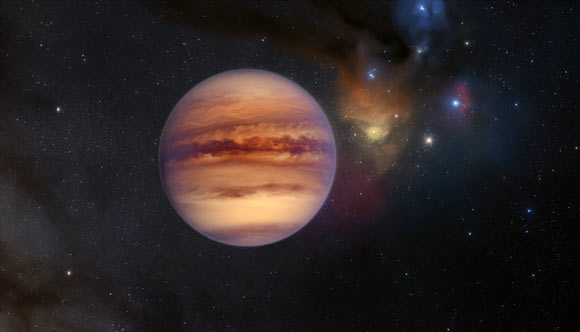
Brown dwarf - Graphic image: ESO
While astronomers struggle to find them in the space around us, in the constellation Ophiuchus, in another star-forming region, there are 70-170 "planets from nowhere" in existence.
This suggests that our Milky Way may have more brown dwarfs than we thought. And to learn more about this mysterious object and the other strange worlds mentioned above, astronomers will have to wait for more advanced observing tools.
Source: https://nld.com.vn/nhung-bi-an-cho-giai-dap-tu-the-gioi-nguoi-chan-ran-196250124102008331.htm






![[Photo] The 5th Patriotic Emulation Congress of the Central Inspection Commission](https://vphoto.vietnam.vn/thumb/1200x675/vietnam/resource/IMAGE/2025/10/27/1761566862838_ndo_br_1-1858-jpg.webp)





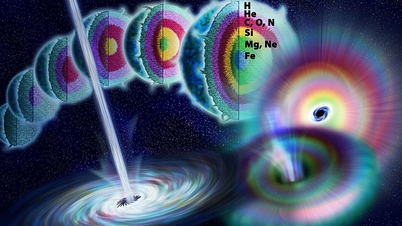

























![[Photo] National Assembly Chairman Tran Thanh Man receives Chairman of the House of Representatives of Uzbekistan Nuriddin Ismoilov](https://vphoto.vietnam.vn/thumb/1200x675/vietnam/resource/IMAGE/2025/10/27/1761542647910_bnd-2610-jpg.webp)
![[Photo] Party Committees of Central Party agencies summarize the implementation of Resolution No. 18-NQ/TW and the direction of the Party Congress](https://vphoto.vietnam.vn/thumb/1200x675/vietnam/resource/IMAGE/2025/10/27/1761545645968_ndo_br_1-jpg.webp)






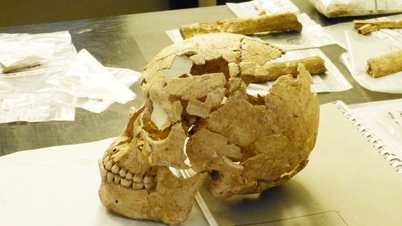



























![[Photo] Prime Minister attends the 28th ASEAN-China Summit](https://vphoto.vietnam.vn/thumb/402x226/vietnam/resource/IMAGE/2025/10/28/1761624895025_image-2.jpeg)











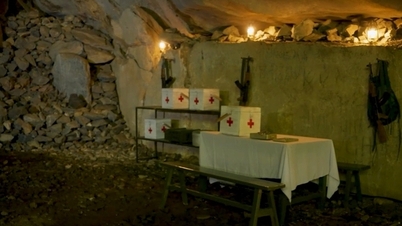



























Comment (0)